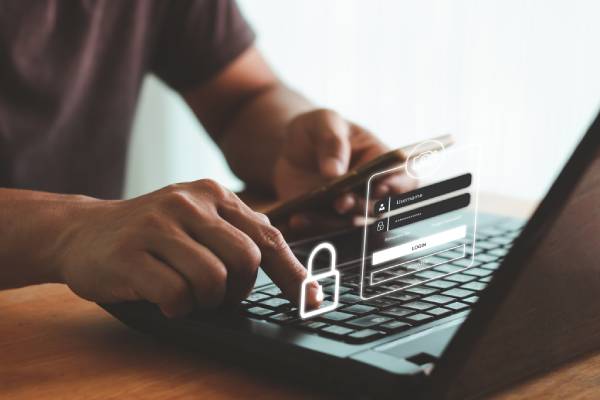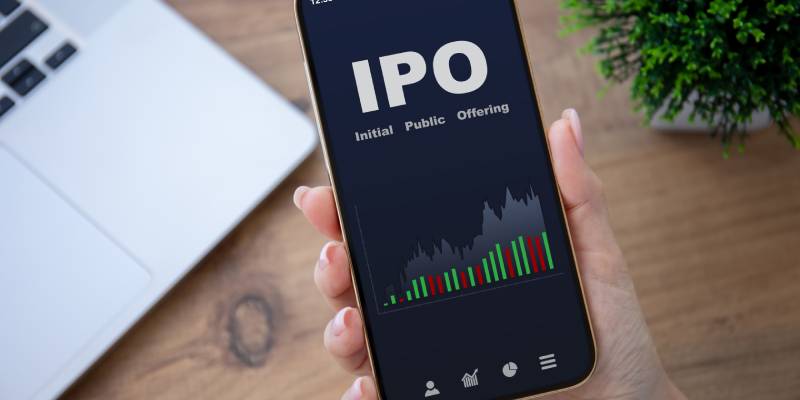A strong defence against ransomware is vital to protecting our money-related systems in today’s digital era. The effects of ransomware on risk management and crafting defence plans are enormous. Looking at recent trends, it is clear that finance firms are up against more complex ransomware attacks that aim to find and use weak spots for significant gains. This piece seeks to give those with some cyber defence knowledge in finance actionable tips and insights. By joining forces, we can improve our defence to guard against these common threats.
Ransomware Security Strategies in Finance
From what I’ve seen in cyber defence, there has been a rise in ransomware attacks targeting the finance industry.
Verizon’s 2021 Data Breach Investigations Report shows that 56% of data breaches are done by outsiders, mostly to get money. Since the finance sector holds a lot of sensitive information, it is a main target for such attacks.
Microsoft has found worrying trends in ransomware and extortion, with finance and insurance among the top targeted sectors. The effects of these attacks go beyond possible money loss to harming the firm’s good name.
Look at these critical points
- 56% of data breaches are by outsiders, primarily for money.
- Finance and insurance are among the top three targeted sectors.
- Finance firms are three times more likely to be hit by cyberattacks than other areas.
These facts show why financial groups are attractive to cybercriminals and why strong defence is needed.
Take the ransomware attack on CNA Financial, a big insurance group in the USA, which resulted in a massive $40 million ransom to unlock the data. This shows the severe threat level and what’s at stake.
Also, finance firms are not just sometimes targeted. They are three times more likely to be attacked. This shows the worth of their data, which includes both money information and client personal details.
As ransomware evolves, we must stay informed about the best ways to protect our critical financial groups with Ransomware Security Strategies.
Money Impact and Ransomware Threat Changes
From my cyber defence observations, the money impact of ransomware attacks is getting scarier. 2020 the average ransom was $170,000 per event, with total recovery costs of over $761,000. Demand increased by 43% the next year, averaging $220,000 per event.
The money hit by ransomware is enormous, as these numbers show
- The average ransom 2020 was $170,000 per event, with recovery costs over $761,000.
- 2021 ransom demands increased by 43%, averaging $220,000 per event.
- Recovery costs 2021 were about $1.5 million, double the year before.
These numbers remind us of the big money damage ransomware can cause, stressing the need for good defence.
Beyond just the ransom demands, ransomware attacks have broader money effects. Things like system rebuilds, getting data back, and the hard-to-measure but considerable harm to reputation all add to the recovery costs, which in 2021 hit around $1.5 million. An increase of 100% from the year before. Whether or not a ransom is paid, recovery costs 10% more than the ransom itself. This shows that the money damage from ransomware goes far past the initial demand.
With ransomware changing, we must recognize the unique risks for financial groups. These places are three times more likely to be attacked because they handle valuable personal and financial information. The economic stakes are high, and the attacks are getting more complex, making it clear we can’t ignore the ransomware threat. Financial services clients need to know these risks and put in place good defences to keep their money and reputation safe.
Also Read: Need to Shield Fintech from Fraudsters With Cybersecurity
Why Finance Groups Are Easy Targets for Ransomware
In my look at cyber defence, I’ve seen that finance firms, especially smaller ones, are often hit by ransomware. These places see more attacks, and It is clear why. They have lots of sensitive data that attackers want, like personal and financial client info.
Smaller firms often lack the strong defence or advanced security steps of more prominent firms, making them easier for cybercriminals to attack.
Seeing these weak spots, It is clear that solid defence plans are needed to keep these places safe from ransomware.
Considering the need for strong defences, it is worth considering how new security ideas like Zero Trust can help finance firms face these challenges.

Using Zero Trust to Fight Ransomware Dangers
I know that Zero Trust is not just a trendy cyber defence term. It is a crucial idea in the fight against ransomware, especially for financial services. Zero Trust’s main ideas. Never trust, always check, least access, and expect a breach. Are the foundation of cyber solid defence.
In finance, where the stakes are high, and the data is sensitive, Zero Trust can help lower ransomware risks. By not trusting anyone inside or outside the network without strict checks, finance places create many defence layers that ransomware attackers must get through. This makes it harder for bad actors to reach critical systems.
The idea of least access means that even if a user’s login info is stolen, the harm is limited because they can only access the least resources they need for their job. By expecting a breach to happen, finance places can respond fast and well, keeping the damage low.
But implementing Zero Trust is not a simple one-time thing. It needs ongoing staff training to spot possible threats, keep defences up to date against new attack methods, and a solid program to fix weak spots quickly. All these are key to a complete Ransomware Security Strategy.
I believe that the best way to keep our financial institutions safe from various cyber threats is to take a complete approach to cyber defence, including Zero Trust and specific technology defences.
Read More: Need to Shield Fintech from Fraudsters With Cybersecurity
Tools and Ways to Fight Ransomware
In our fight against ransomware, we use Microsoft’s security tools, such as Sentinel and Defender for Endpoint, as crucial tools to keep our organizations safe. Sentinel, a robust SIEM system, works with Defender for Endpoint to provide a complete defence against ransomware.
To fight ransomware well, we see these tools and ways as key
- Sentinel, a robust SIEM system, works with Defender for Endpoint.
- Using Multi-Factor Authentication (MFA) adds an extra layer of defence.
- Keep security updated and improving, using the latest threat info.
The finance industry can be more robust against the changing ransomware threat using these tools and ways.
I also see how important it is to lower risk by limiting possible damage. Using Multi-Factor Authentication (MFA) is a key step, adding an extra defense layer needed in today’s threat world.
Staying ahead of cybercriminals requires continuous security upkeep and improvement, using the latest threat information. With these tools and methods in place, the finance industry is better prepared to handle the complex world of cybersecurity rules and industry standards.
How the Industry and Rules Respond to Ransomware Security Strategies
Relieving the rules for cyber defence, especially against ransomware, has become a significant focus for once. SEC has highlighted this threat, making it a priority in their regulations. Calls for a united response to ransomware are getting louder and more urgent. Moving to a real example, Showing how these rule efforts turn into action is vital. A proactive finance services client has made their setting follow a Secure By Design plan, which includes detection, prevention, and defence ways. This whole approach to cyber defence is not just about meeting rule demands. It is about staying ahead of cybercriminals. As we think about the importance of rule guidance and working together in the industry, It is clear that finance services clients must also take active steps to keep their systems and data safe from ransomware threats.
Keeping Your Money Safe from Ransomware
We have looked at the many sides of ransomware threats and seen that being resilient is more than just a popular word. Keeping financial assets and client trust safe from cyber dangers is needed. The growing skill of ransomware tactics means our responses and plans must be as skilled and complete. Based on our shared experience and knowledge, using a defence with many layers is critical. With the correct stance and constant watchfulness, finance services can improve their defences against these non-stop threats.
Whether it is financial fraud or illegal practices, Trade Finance Advice provides expert advice. Visit https://www.tradefinanceadvice.com/ to learn expert advice on issues faced by trade finance organizations.



